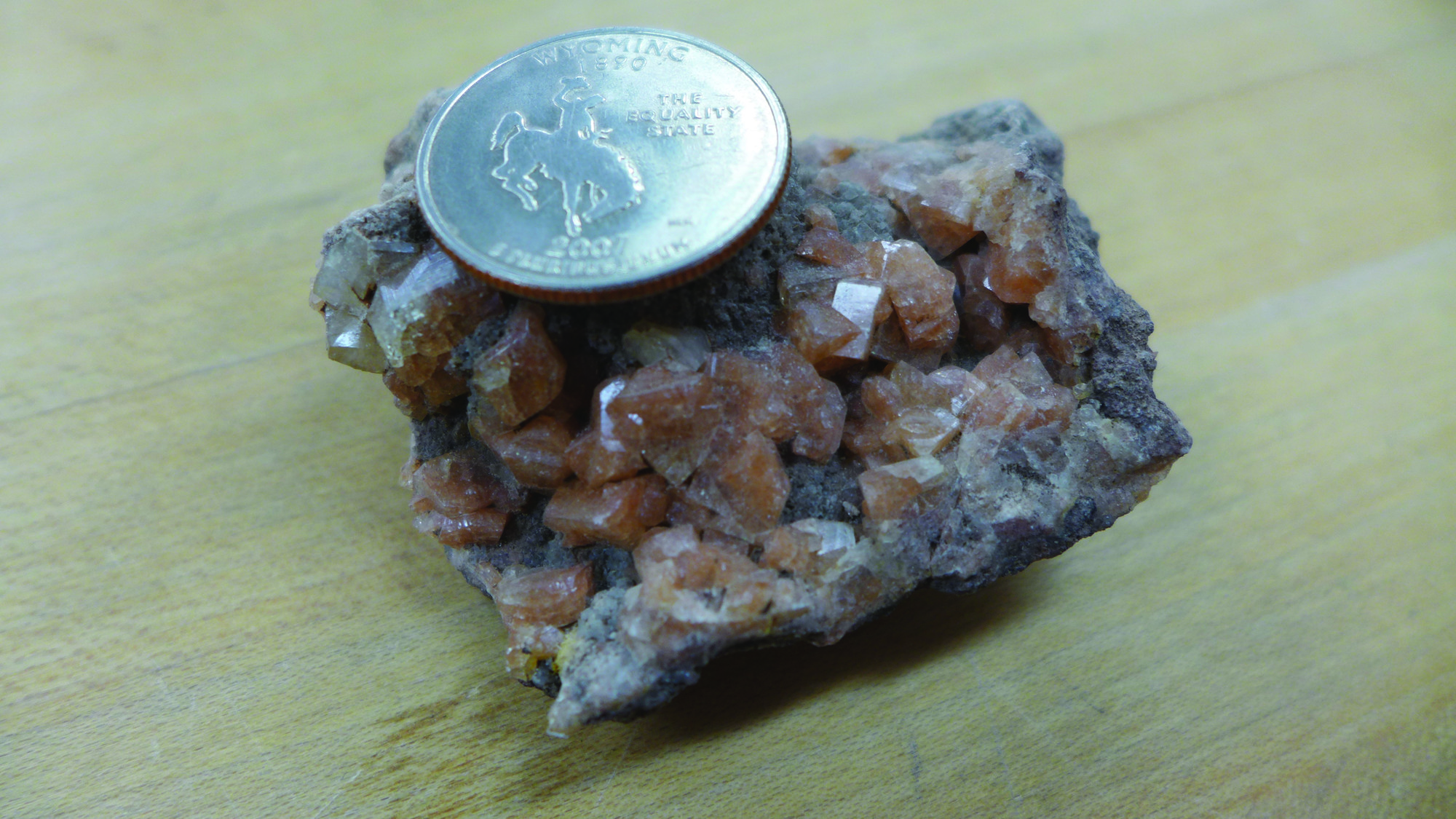NEWS RELEASE: WSGS Publishes Report on Zeolite Resources in Wyo.
Wyoming State Geological Survey sent this bulletin at 07/18/2016 10:53 AM MDT |
|
Having trouble viewing this email? View it as a Web page. |
July 18, 2016
******FOR IMMEDIATE RELEASE******
Media Contact:
Christina George
(307) 766-2286 x231
Christina.george@wyo.gov

A sample of the natural zeolite, chabazite.
WSGS Publishes Report on Zeolite Resources in Wyoming
Wyoming hosts potentially commercial-grade natural zeolite deposits that have only been developed on a small scale, according to a report recently published by the Wyoming State Geological Survey (WSGS).
Natural zeolites’ abilities of adsorption, desorption, and reversible hydration and dehydration make them useful in agriculture, hazardous waste containment, odor control, water and air purification and cement manufacturing. Some of the most common natural zeolites are clinoptilolite and heulandite.
Authors of the “Zeolite Resources in Wyoming” report determined zeolites offer prospective development opportunities for the state because: Wyoming hosts deposits of natural zeolites in minable quantities, most zeolites currently used by industry are synthetic and therefore more costly to utilize than natural zeolites, and the utility of zeolites is expanding in many areas and continues to prove useful as new applications are demonstrated.
“As new technologies are developed and the future need for minerals such as zeolites potentially expands in the United States and around the world, we hope reports such as this assist exploration efforts and the potential development of these resources in Wyoming,” says Tom Drean, WSGS director.
WSGS geologists for this investigation verified previously reported occurrences and explored additional favorable locations for natural zeolite deposits. The greater Green River Basin, particularly the Washakie Basin in southwest Wyoming, hosts the majority of natural zeolite deposits in the state. Small deposits occur at the margins of the Wind River and Bighorn basins, and minor occurrences are found in the southern margin of the Power River Basin and northeastern Shirley Basin.
“We’ve tried to take a more detailed look at natural zeolite occurrences in Wyoming and provide the reader with outcrop and sample photos, descriptions and geochemical data of the outcrops we examined,” says Robert Gregory, WSGS geologist and principal investigator of this report.
Wyoming’s sole historic commercial natural zeolite deposit is the now-inactive Fort LaClede quarry in southeastern Sweetwater County, where more than 12,000 tons of clinoptilolite was produced in 2002. Previous reports indicate U.S. Energy Corporation in the 1980s mined small amounts of clinoptilolite-chabazite for use in an experimental sewage treatment plant in Riverton.
Natural zeolite prices vary between $110 and $440 per ton. Of the 37 countries that are believed to produce natural zeolite, the United States ranked third in 2014 when approximately 3 million metric tons was produced worldwide, most of which was mined in China. The 64,100 tons produced in the United States that year came from eight mines in six western states.
The new study was requested by the Wyoming State Legislature, which, in 2014, allocated funding to the WSGS to investigate the state’s iron, lithium, rare earth elements and natural zeolite mineral resources.
“We greatly appreciate the support of the Wyoming Legislature and its ongoing effort to expand our geologic knowledge base in the hope of expanding and diversifying Wyoming’s economy,” Gregory says.
The WSGS has developed a publicly accessible online database that will soon be available, the Wyoming Database of Geology (Wyo-DOG), which contains locations, geologic settings and analyses for all samples in this and earlier reports.

